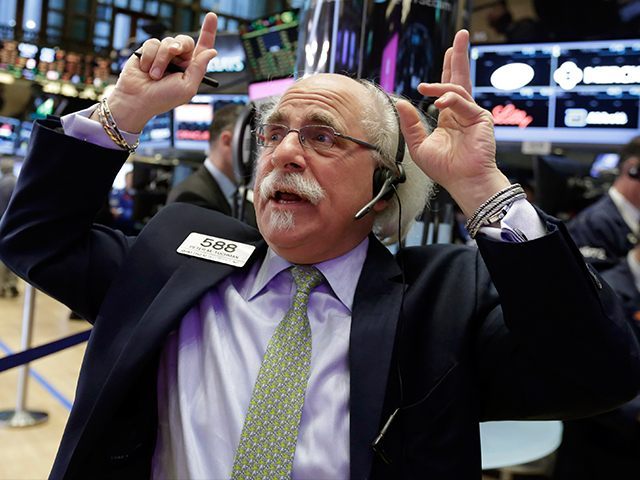The U.S. corporate bond default rate jumped to 3.3 percent at the end of February, a level higher than when Lehman Brothers filed for bankruptcy in September 2008.
Just over 7 years ago, at the beginning of the financial crisis, the corporate bond default rate was just 2.96 percent, having quietly spiraled up from 1.02 percent nine months earlier, according to Standard & Poor’s Global Fixed Income Research.
Unbeknownst to the public at the time, the U.S. banking system was experiencing a liquidity crisis that would soon wipe out the sub-prime market, savage real estate prices and launch the worst recession since the 1930s.
Despite Herculean efforts by the Federal Reserve to flood financial institutions with cheap and plentiful cash, corporate bond defaults skyrocketed up to a 12 percent peak in November 2009.
Following the Lehman crisis, the federal government embarked on the greatest deficit spending spree in the history of the planet. To fund that effort, the Federal Reserve implemented a dizzying number of money-printing schemes to suppress interest rates and help companies avoid being forced to restructure or liquidated.
But according to Wolf Richter at the insightful Wolf Report, “Newly created money surged through the system, and even deadbeats could get new financing, and defaults eased off. What followed was the greatest credit bubble in US history. By July 2014, the default rate had dropped to 1.4 percent.”
Richter warns that rather than the financial crisis forcing corporations to reduce risk-taking and deleverage, the Federal Reserve’s policy of creating record low corporate bond interest rates allowed the corporate bond market to spike up from $5.9 trillion in 2009 to an all-time record $7.8 trillion at the end of 2015.
The big driver in funding the growth of corporate bonds was yield-starved American seniors, who used to invest in certificates of deposits at banks. With the interest rates on 6-month CDs falling from about 4.5 percent in 2008 to under 1/2 percent by 2012, seniors were forced to take on more risk by investing in corporate bond mutual funds that advertised returns of up to 5 percent.
As a consequence, Wall Street based brokers have been engaged in the wildly profitable business of selling over $100 billion of new corporate bonds each month to their neighborhood buddies at Wall Street-based mutual funds.
But this incestuous game of selling grandma and grandpa “junk bonds” since 2010 may be about to come to a screeching halt, with 11 of Standard & Poor’s “rated” companies defaulting on their debt payments in February. Although there were seven energy companies that defaulted last month, the list is beginning to spread out to the general economy, with two defaults in financial sector, one in media, and one in the high-tech office equipment sector.
As a sign of how fast the solvency of the bond market deteriorated in February, S&P only upgraded the credit rating on 20 companies with $103 billion in debt, while downgrading 110 companies, with $399 billion in debt.
With a five-to-one negative ratio of downgrades to upgrades, Standard & Poor’s suggests that the bond market faces a “pessimistic scenario,” with default rates on track to rise to 5.2 percent, “[i]f global economic and financial headwinds continue on their present course.”
As stress was mounting in credit markets during December, Martin Whitman’s $788 million “Third Avenue Management” mutual fund began blocking client withdrawals to prevent the equivalent of a “run on the bank.”
In another sign that Wall Street sees the corporate bond market tanking, Goldman Sachs Group Inc. announced plans to dump 5 to 10 percent of their bond traders and salespeople on March 3.
Bond holders have not panicked yet, but as Wharton Business School professor of finance Itay Goldstein recently warned on Twitter, “I think people who look at the financial system have to be aware that this is a potential source of fragility.”

COMMENTS
Please let us know if you're having issues with commenting.